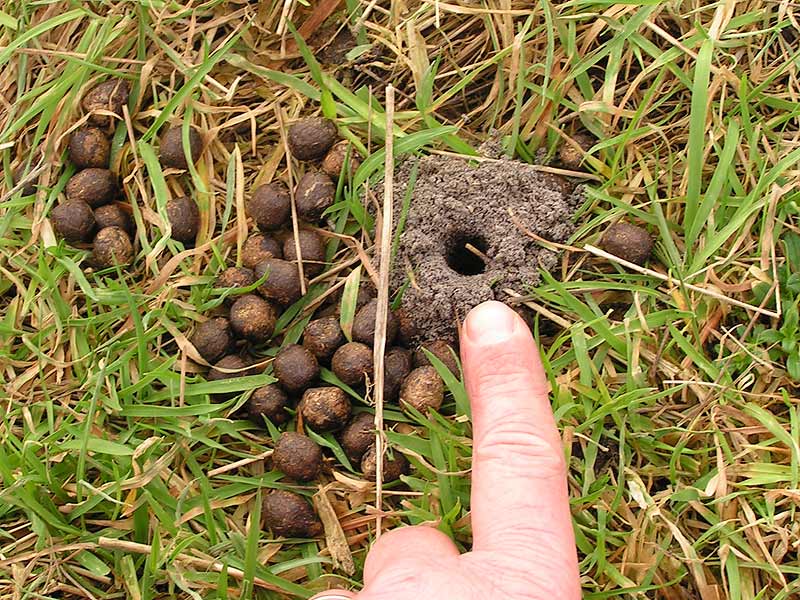Typhaeus Typhoeus on:
[Wikipedia]
[Google]
[Amazon]
Typhaeus typhoeus, or the minotaur beetle, is a

beetle
Beetles are insects that form the Taxonomic rank, order Coleoptera (), in the superorder Holometabola. Their front pair of wings are hardened into wing-cases, elytra, distinguishing them from most other insects. The Coleoptera, with about 40 ...
in the family
Family (from ) is a Social group, group of people related either by consanguinity (by recognized birth) or Affinity (law), affinity (by marriage or other relationship). It forms the basis for social order. Ideally, families offer predictabili ...
Geotrupidae
Geotrupidae (from Greek γῆ ''(gē)'', earth, and τρῡπητής ''(trȳpētēs)'', borer) is a family of beetles in the order Coleoptera. They are commonly called earth-boring dung beetles or dor beetles. Most excavate burrows in which t ...
, also referred to as earth-boring dung beetles. They are native to Europe
Europe is a continent located entirely in the Northern Hemisphere and mostly in the Eastern Hemisphere. It is bordered by the Arctic Ocean to the north, the Atlantic Ocean to the west, the Mediterranean Sea to the south, and Asia to the east ...
. The beetle is named after the Typhon
Typhon (; , ), also Typhoeus (; ), Typhaon () or Typhos (), was a monstrous serpentine giant and one of the deadliest creatures in Greek mythology. According to Hesiod, Typhon was the son of Gaia and Tartarus. However, one source has Typhon as t ...
, a giant of Greek mythology
Greek mythology is the body of myths originally told by the Ancient Greece, ancient Greeks, and a genre of ancient Greek folklore, today absorbed alongside Roman mythology into the broader designation of classical mythology. These stories conc ...
.
Appearance
Minotaur beetles grow to 15 to 24 mm in length. Their bodies are black and slightly shiny all over, stout and dome-shaped. On theelytra
An elytron (; ; : elytra, ) is a modified, hardened forewing of beetles (Coleoptera), though a few of the true bugs (Hemiptera) such as the family Schizopteridae are extremely similar; in true bugs, the forewings are called hemelytra (sometime ...
are longitudinal grooves with punctures. There are numerous small spines on each leg. The species clearly exhibits sexual dimorphism
Sexual dimorphism is the condition where sexes of the same species exhibit different Morphology (biology), morphological characteristics, including characteristics not directly involved in reproduction. The condition occurs in most dioecy, di ...
. Characteristic of the males are three horn-like outgrowths on the pronotum
The prothorax is the foremost of the three segments in the thorax of an insect, and bears the first pair of legs. Its principal sclerites (exoskeletal plates) are the pronotum (dorsal), the prosternum (ventral), and the propleuron (lateral) on e ...
. The two outer protrusions are long, while the one in the middle is short. The females instead have a few pointed humps here.
Occurrence
The minotaur beetle is found in certain regions ofEurope
Europe is a continent located entirely in the Northern Hemisphere and mostly in the Eastern Hemisphere. It is bordered by the Arctic Ocean to the north, the Atlantic Ocean to the west, the Mediterranean Sea to the south, and Asia to the east ...
and North Africa
North Africa (sometimes Northern Africa) is a region encompassing the northern portion of the African continent. There is no singularly accepted scope for the region. However, it is sometimes defined as stretching from the Atlantic shores of t ...
. It lives in sandy, sunny areas of pine forests or in sandy moorland
Moorland or moor is a type of Habitat (ecology), habitat found in upland (geology), upland areas in temperate grasslands, savannas, and shrublands and the biomes of montane grasslands and shrublands, characterised by low-growing vegetation on So ...
. They are rare elsewhere. In Germany, the minotaur beetle is an "especially protected" species and is protected under the ''Bundesartenschutzverordnung
The Federal Species Protection Regulations, first adopted on 19 December 1986, is a set of federal regulations in Germany. These regulations protect wild plants and animals. They are the implementing rules promulgated by the government to give forc ...
'' (BArtSchV).

Literature
* Karl Wilhelm Harde, František Severa, Edwin Möhn: ''Der Kosmos Käferführer: Die mitteleuropäischen Käfer.'' Franckh-Kosmos Verlags-GmbH & Co, Stuttgart 2000,References
External links
* http://www.wildlifetrusts.org/species/minotaur-beetle {{DEFAULTSORT:Typhaeus Typhoeus Geotrupidae Beetles described in 1758 Beetles of Europe Taxa named by Carl Linnaeus